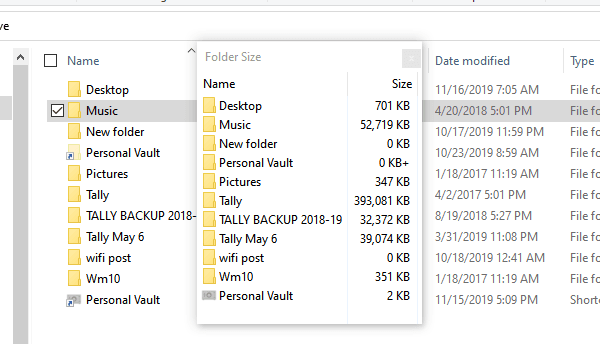


It will include the date it was created, size, and its primary folder. Hover your mouse on one of the folders and a small dialog box will appear near the folder name. * You can also check other details like folder created date, subfiles, subfolder count and folder attributes (like hidden and read-only) in folder properties dialog. Method 1: How to View Folder Size in Windows 10 from Properties?Ģ- Right click on folder for which you want to see folder size, and click on “Properties” in context menu.ģ- In the window that opens, you can see a general size and disk size of that folder. For that, in this post, I will show you some easy ways to show exact size of a folder in Windows using the File Explorer. Regardless, it seems odd that they didn’t provide it as an option in Explorer’s settings. To show the size of a folder, Windows Explorer would have to read ever file within every sub-folder before it could return a result. The most likely reason it does not display folder sizes is that it would slow down browsing of the file system significantly. Size column in Windows File explorer shows sizes for files, however it doesn’t show folder sizes for folders. Also, if the hard drive reaches its storage limit, we will be facing performance, access and speed problems of reading and writing the information stored on the disk. Show and calculate MD5, SHA-1, SHA-256 and SHA-512. FSE features include: Show and calculate file and folder size columns in either KB, MB, GB or TB in Windows Explorer. Click here to download Folder Size Explorer for free. We can delete some extra files from that folder to make some space free for other programs or files. Folder Size Explorer is compatible with 32 and 64-bit versions of Windows 10, 7, 8, Vista, XP, 2008, 20. Large folder size is one of the most common reasons behind our computer systems slowing down or lagging. The management of the space on the hard disk is a fundamental task.


 0 kommentar(er)
0 kommentar(er)
